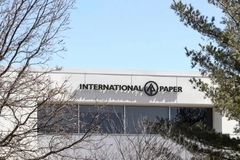Researchers find new plastic litter identification technique amid “alarming” microplastic findings

08 Nov 2022 --- Researchers at the Philipp’s University of Marburg, Germany, have made it possible to identify plastics with photoluminescence (PL) spectroscopy and machine learning (ML). The research highlights the necessity of identifying the amount and composition of plastics to understand the impact of plastic litter on the environment.
The researchers say they have demonstrated that such a combined approach for plastic identification could rely on photoluminescence spectroscopy, which is analyzed by the study’s ML-based theoretical approach. To do so, they evaluated the capability of ML models to identify plastic and non-plastic materials based on their PL spectra.
PL spectroscopy can be used for plastic litter identification. The advantage of this technique is its simplicity, explain the researchers. A set-up consists of a light source that emits monochromatic light in the visible range, a spectrometer and a set of lenses to collect the light emitted from the sample. Since the amount of necessary components is lower compared to other spectroscopy, the acquisition costs for PL spectroscopy are lower.
As a result, it should be accessible everywhere compared to other techniques. This, in turn, can be used to systematically extend plastic litter monitoring by conducting sampling worldwide and allowing the researchers to establish databases of spectral data sets capturing sample diversity.
The results reveal that most ML models can achieve high prediction performances with over 95% accuracy. In particular, the models combined with Signal Dissection by Correlation Maximization (SDCM) achieved the highest performance.
Illustration of the PL spectroscopy setup. The excitation light follows the path highlighted in blue to induce PL on the sample. The pathway of the PL signal is highlighted in red. Global plastic litter data
The “alarming” findings of the omnipresence of microplastics encouraged the researchers to improve their efforts to track the fate of plastic litter in the environment and to implement worldwide effective waste management plans to avoid further pollution.
They explain that such strategies have to be based on a quantitative understanding of plastic litter distribution and characterization. To obtain the necessary data, plastic litter monitoring has to be implemented in combination with the use of consistent and reliable methods of sample characterization.
In particular, valuable insights about the average microplastic size and material type and their global distribution can be gained by analyzing plastic samples extracted from different sites. The material type is highly relevant for plastic pollution mitigation, as it could allow the researchers to pin down site-specific sources for the most common plastic litter types.
Effective waste management strategies have to be based on a quantitative understanding of plastic litter distribution and characterization, stress the researchers. To obtain the necessary data, plastic litter monitoring has to be implemented in combination with the use of consistent and reliable methods of sample characterization.
Starting with the input data, ML methods generate models to classify the samples into their prescribed known categories like plastic types.
The researchers explain that plastic litter is frequently associated with marine pollution. Therefore, they chose to evaluate the suitability of ML for PL-based identification of samples in the marine environment. For this purpose, they used a set of pristine plastics, plastics derived from consumer products and marine organic samples.
Significant progress in the field of microplastic research will only be achievable if a better quantitative understanding of the current status quo is to be obtained. This requires worldwide measurement on plastic litter distributions and compositions.
 Plastic properties can change in the environment and deteriorate after long exposure times.Data challenges
Plastic properties can change in the environment and deteriorate after long exposure times.Data challenges
However, the researchers explain that such data acquisition is challenging from both an experimental and theoretical perspective. Experimentally, samples have to be characterized according to standard protocols, ideally with simple setups that could be available worldwide.
Theoretical analysis approaches then have to be able to extract from vast amounts of experimental data the relevant material parameters.
Detecting plastics in the environment, however, is a challenging task, as they are diverse: during production, additives are frequently utilized to change the material properties of plastics. In the environment, these properties can change and deteriorate after long exposure times. Therefore, it is fundamental to conduct frequent and consistent sampling at multiple sample sites, they assert.
Therefore, samples from the environment show a large diversity since interactions with the environment can alternate the chemical composition. Therefore, spectral libraries can always be considered as unbalanced and incomplete as it is impossible to reflect the sample variety in a single data set.
To account for these conditions in the study, the researchers generated their spectral data set from 46 samples, which consisted of non-plastic materials from the marine environment and plastics from different manufacturers and retail products.
In total, all samples were measured 29 times, with the exception of four non-plastic samples, which were measured 19 times.
By Natalie Schwertheim











